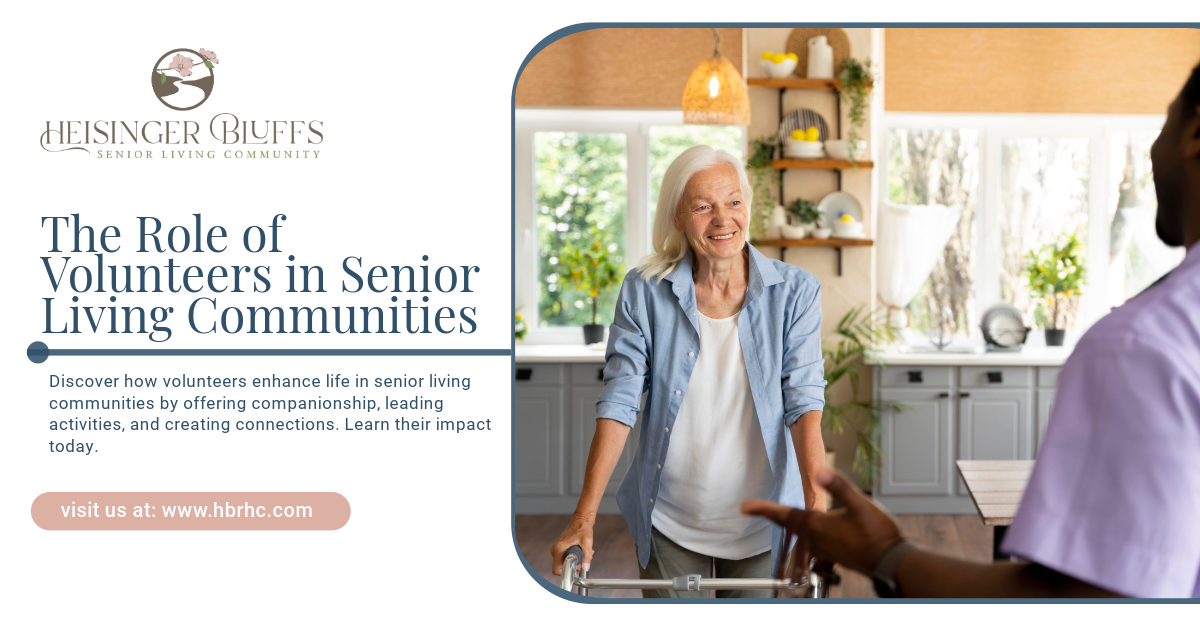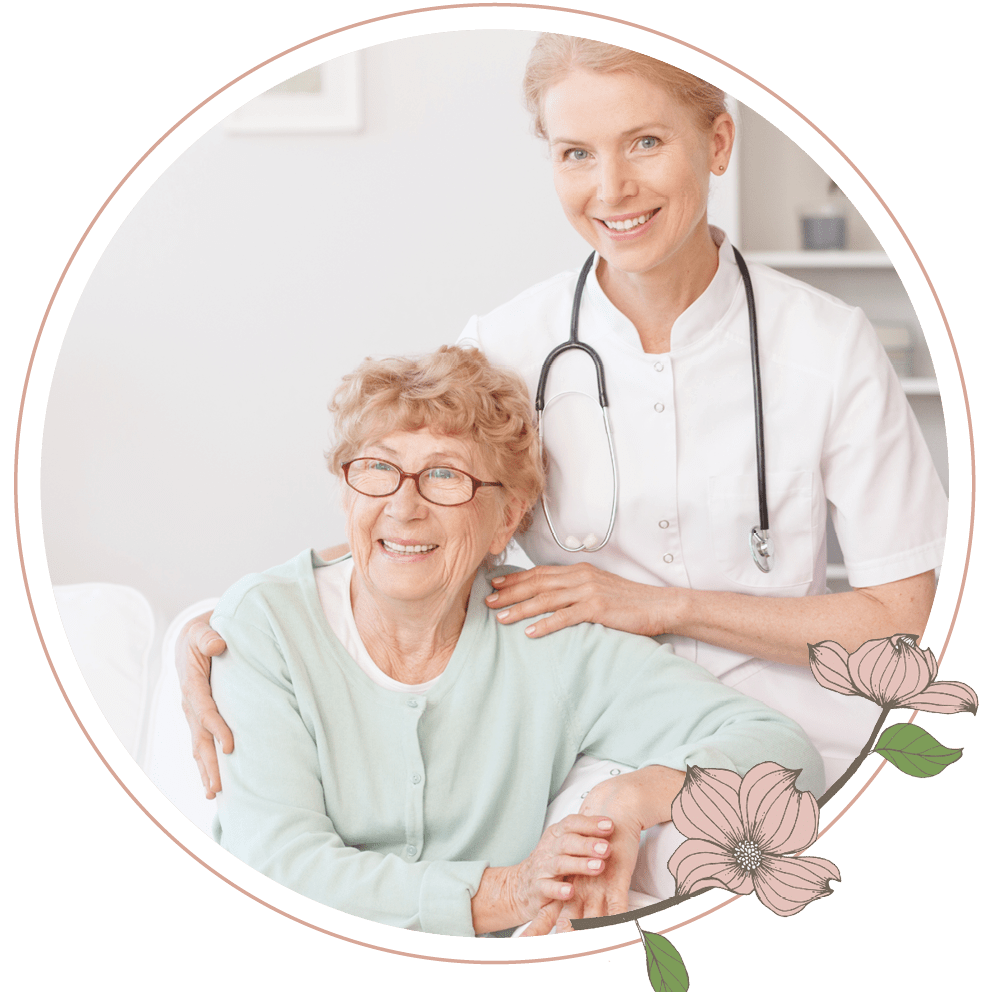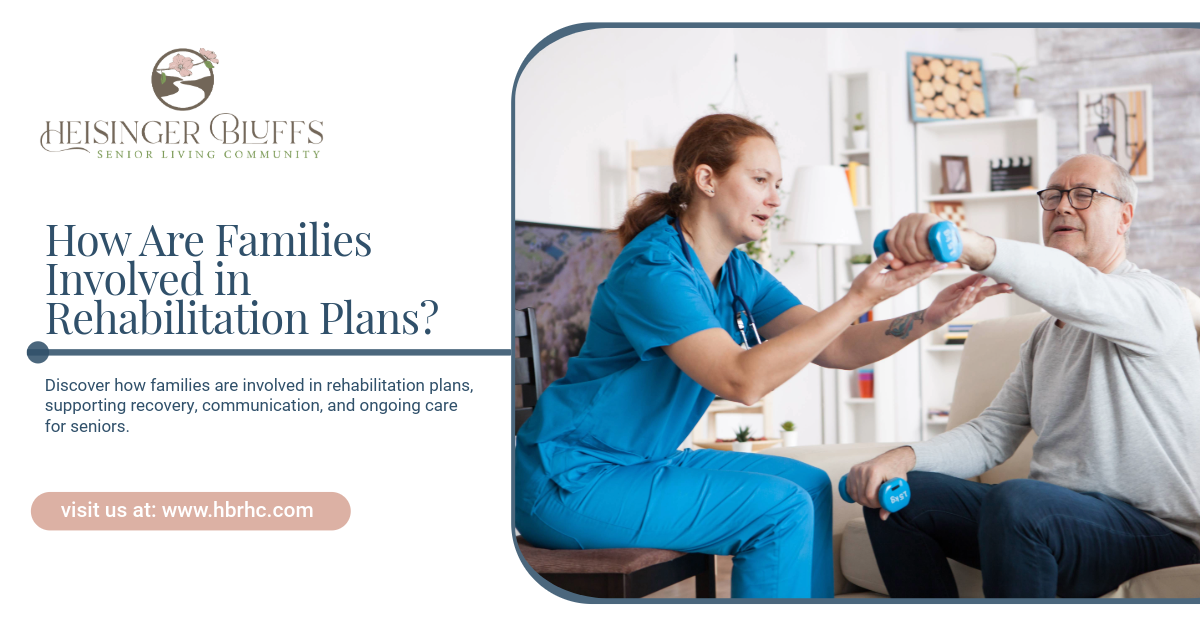Volunteers' Role in Senior Living Communities

Volunteers play an essential role in creating a vibrant and nurturing environment withinsenior living communities. They bring energy, compassion, and a fresh perspective that significantly enriches the lives of residents. Whether through companionship, leading engaging activities, or offering specialized skills, volunteers make a meaningful impact every day. In this blog, we will explore the various roles volunteers fulfill, the benefits they bring to residents, and how their presence fosters a stronger sense of community.
Why Volunteers Are Vital in Senior Living Communities
Volunteers provide much more than additional support—they serve as connections to the larger community outside the senior living setting. Their involvement contributes to residents’ physical, emotional, and social well-being.
- Building Relationships: Volunteers offer companionship, often forming lasting bonds with residents.
- Enriching Activities: From leading hobby groups to hosting music or art classes, volunteers bring creativity and variety to residents’ daily lives.
- Offering Specialized Support: Many volunteers use their professional skills—like healthcare, education, or therapy—to provide services that complement existing staff efforts.
Key Roles Volunteers Play
1. Providing Companionship
Loneliness can be a significant challenge for seniors. Volunteers combat this by offering emotional support and friendly conversation.
Activities Include:
- Reading books or newspapers together.
- Playing board games or card games.
- Taking walks or sharing meals.
Impact: Regular companionship from volunteers helps seniors feel more connected and less isolated, leading to improved mental well-being.
2. Leading Activities and Events
Volunteers often play a major role in planning and leading activities that engage seniors both physically and mentally.
Examples of Volunteer-Led Activities:
- Arts and Crafts: Encouraging creativity with painting, scrapbooking, or pottery sessions.
- Fitness Classes: Gentle yoga, stretching, or light aerobic exercises tailored for seniors.
- Game Nights: Organizing bingo, trivia, or puzzles to promote social interaction.
- Music and Entertainment: Singing groups, live music, or dance sessions.
Why It Matters: Staying active through enjoyable activities boosts seniors’ cognitive abilities, mobility, and emotional health. Volunteers bring fresh ideas that keep these programs engaging.
3. Assisting with Daily Tasks
Volunteers can support residents with small, meaningful tasks that improve their quality of life.
Examples:
- Assisting with letter writing or helping residents connect with loved ones via video calls.
- Organizing personal spaces, including decluttering or decorating for holidays.
- Providing transportation assistance within the community.
Benefit: These small gestures make daily life smoother for residents while fostering a sense of dignity and independence.
4. Sharing Specialized Skills
Some volunteers offer unique talents or professional expertise that further enhance the care provided in senior living communities.
Examples:
- Healthcare Support: Licensed medical professionals may offer basic wellness check-ins or educational sessions.
- Therapeutic Services: Volunteers trained in therapy or mindfulness techniques can provide relaxation workshops.
- Educational Workshops: Retired teachers may lead history discussions, book clubs, or technology tutorials.
Impact: These specialized contributions enrich residents’ lives by introducing them to new skills or enhancing existing programs.
5. Promoting Intergenerational Connections
Programs that involve younger volunteers—such as students—offer special opportunities for seniors to engage with new generations.
Examples:
- School partnerships for visits and storytelling sessions.
- Students teaching seniors how to use technology (smartphones, social media, or tablets).
- Youth-led performances, such as choir concerts or drama productions.
Benefits: Intergenerational connections bridge the gap between seniors and younger people, creating meaningful relationships that foster understanding and joy.
Benefits of Volunteer Involvement for Residents
The presence of volunteers brings a range of emotional, social, and physical benefits to residents, such as:
1. Reduced Loneliness
Regular interactions with volunteers provide residents with asense of belonging and purpose. Loneliness is a common challenge in senior living, but volunteers offer companionship that reduces feelings of isolation.
2. Improved Mental Health
Activities like arts, games, or music stimulate cognitive function and promote mental wellness. Positive interactions with volunteers boost mood and self-esteem.
3. Greater Engagement
Volunteers help residents stay active and participate in hobbies, social events, and learning opportunities. This engagementenhances their overall quality of life.
4. Emotional Connection
Many seniors form strong emotional connections with volunteers who provide a listening ear, kindness, and encouragement. These bonds improve their overall happiness and mental resilience.
Benefits for Volunteers
While residents reap numerous advantages, volunteers also find the experience fulfilling.
- Personal Fulfillment: Making a positive impact on someone’s life brings a sense of accomplishment and joy.
- Skill Development: Volunteers gain leadership, caregiving, and communication skills.
- Strengthened Communities: Volunteering fosters a sense of connection and unity between people of all generations.
- New Friendships: Many volunteers form meaningful relationships with seniors and staff members.
How Senior Living Communities Support Volunteers
High-quality senior living communities provide strong support systems for their volunteers to ensure meaningful and effective contributions.
- Training Programs: Volunteers receive training to help them understand residents’ needs and deliver appropriate support.
- Flexible Scheduling: Volunteer programs are often designed to accommodate diverse schedules.
- Recognition and Appreciation: Facilities frequently celebrate volunteers’ efforts with events, awards, or thank-you initiatives.
How to Get Involved
Volunteering at a senior living community is both rewarding and impactful. Here are a few steps to begin:
- Contact Local Communities: Reach out to senior living centers to learn about their volunteer opportunities.
- Identify Your Interests: Decide how you’d like to contribute—whether it’s through companionship, activities, or specialized skills.
- Complete Training: Many communities offer training sessions to prepare volunteers for their roles.
Final Thoughts
Volunteers are a cornerstone of thriving senior living communities, offering time, compassion, and creativity to enrich residents’ lives. Their presence fosters social connection, reduces loneliness, and brings fresh perspectives to daily routines. AtHeisinger Bluffs, we celebrate the vital role volunteers play in creating a warm, engaging, and supportive environment for seniors. If you are interested in making a difference, reach out to us to learn how you can volunteer and bring joy to the lives of our residents.
Frequently Asked Questions
How can I become a volunteer at a senior living community?
To volunteer, contact local senior living facilities to learn about available opportunities. Most centers offer orientation and training to help you get started.
What types of activities do volunteers usually lead?
Volunteers lead a variety of activities, including arts and crafts, fitness classes, games, music sessions, and technology tutorials. They may also assist with events or offer companionship.
Are there age or skill requirements for volunteering?
Most senior living communities welcome volunteers of all ages and backgrounds. Some roles may require specific skills, but many opportunities are open to anyone willing to help.
Sources:
- https://www.nytimes.com/2023/01/25/well/move/yoga-seniors.html
- https://www.cdc.gov/physical-activity/features/boost-brain-health.html
- https://pmc.ncbi.nlm.nih.gov/articles/PMC10426317/
- https://pmc.ncbi.nlm.nih.gov/articles/PMC10847182/











